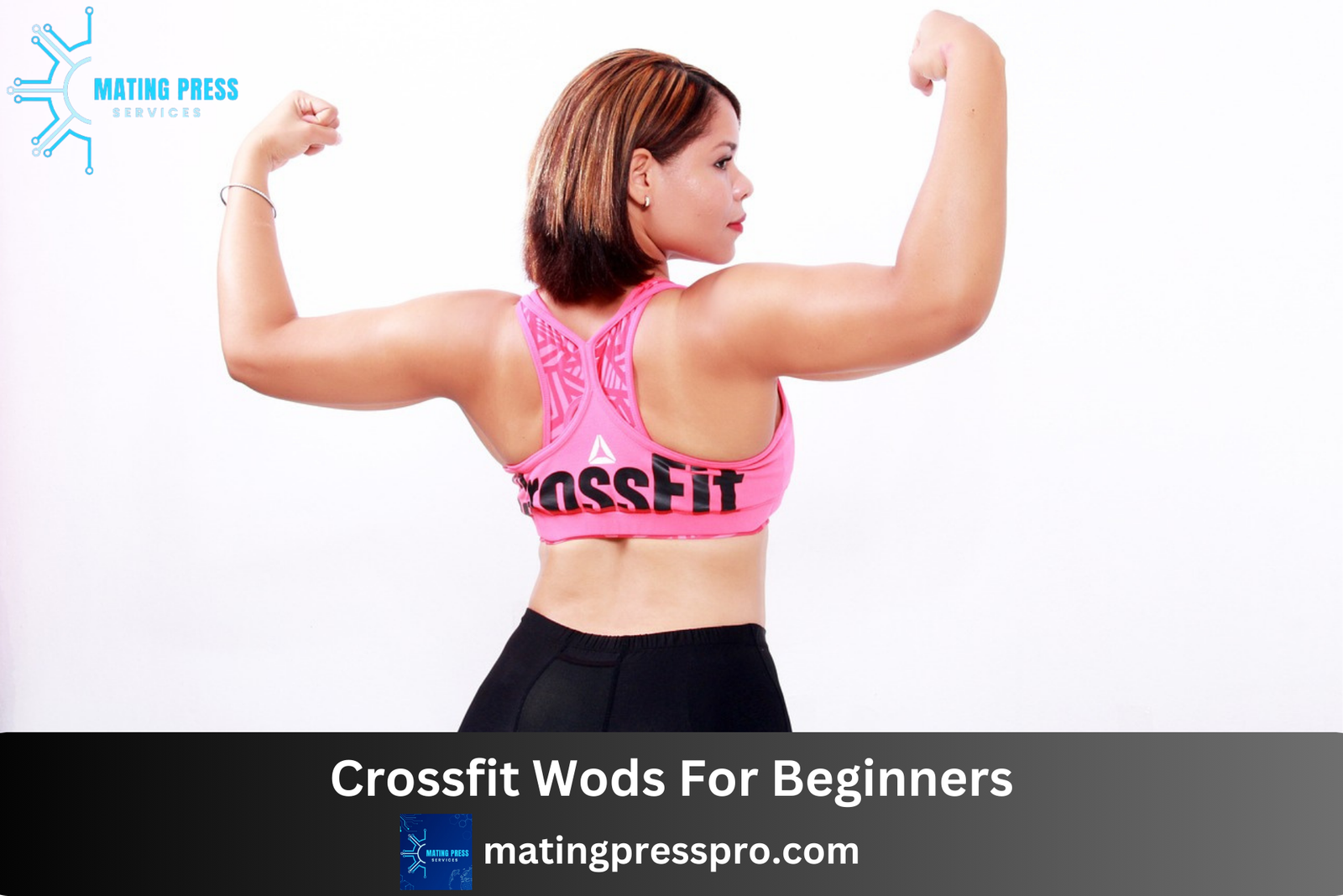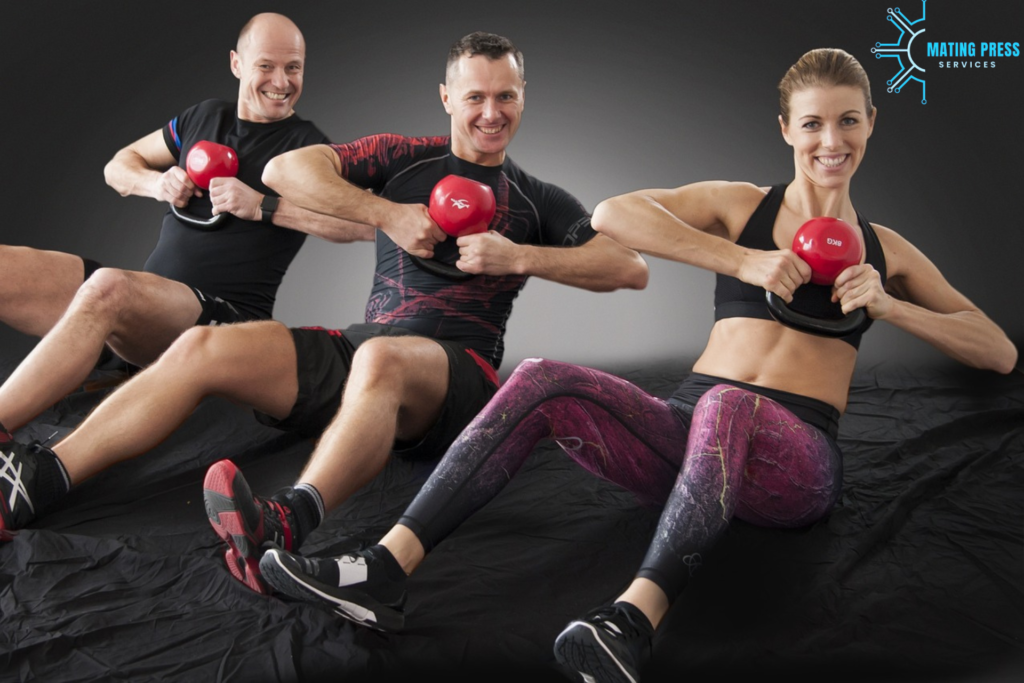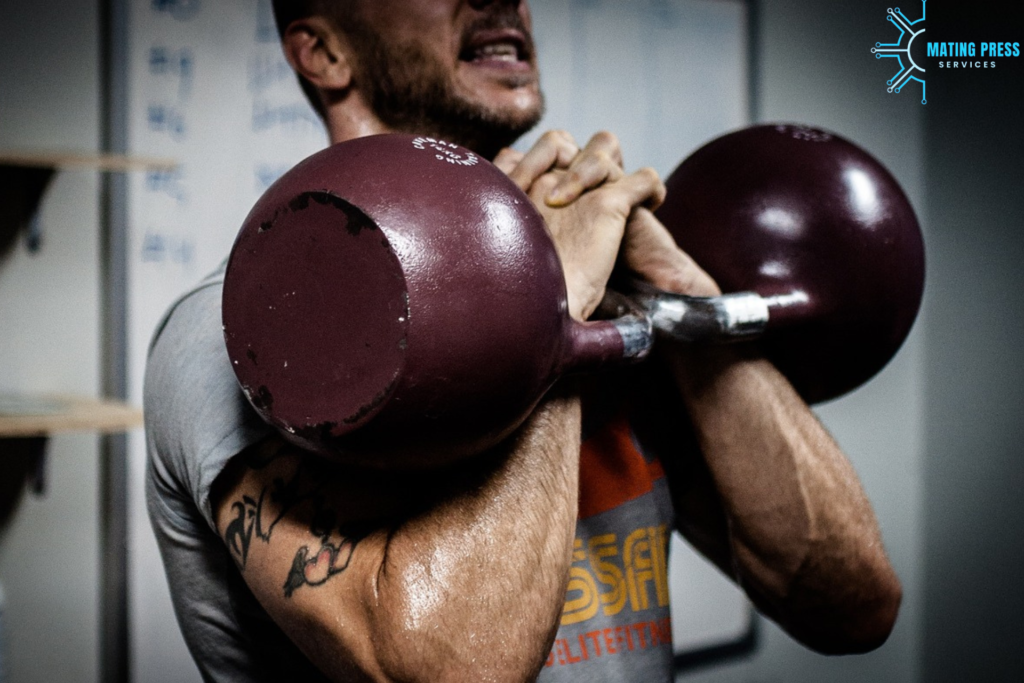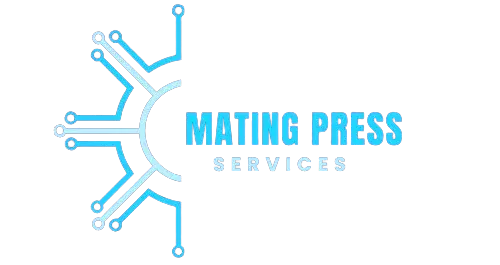Crossfit Wods For Beginners

Crossfit Wods has changed the fitness world with its unique combination of high-intensity functional training. CrossFit, which was created by Greg Glassman in the early 2000s, is a program that aims to push people of all fitness levels to their limits through weightlifting, cardiovascular conditioning and bodyweight exercises. For beginners, CrossFit can be both exciting and daunting. This comprehensive guide will break down everything you need to know to start your CrossFit journey with confidence, including foundational workouts, tips for success, and expert insights.
What is Crossfit Wods?
Definition and Origins
Crossfit Wods is a high-intensity fitness training regimen that integrates a variety of exercises and training methodologies to improve overall physical fitness. It was developed by Greg Glassman and Lauren Jenai, with the first official Crossfit Wods gym opening in 2001. CrossFit combines elements of weightlifting, gymnastics, and metabolic conditioning to create a versatile and challenging workout experience. The central philosophy of CrossFit is to build a well-rounded fitness base by focusing on functional movements—movements that mimic everyday activities, such as lifting, running, and jumping.
Why CrossFit for Beginners?
Crossfit offers many benefits for beginners making it an attractive option for those new to fitness. The program’s emphasis on varied workouts helps prevent boredom and keeps participants engaged. High intensity nature of crossfit can lead to rapid improvements in strength endurance and overall fitness. Additionally the supportive community often found in Crossfit Wods gyms provides encouragement and accountability which can be particularly motivating for beginners.
How to Start Crossfit Wods
What are Crossfit Wods Workouts?
Crossfit Wods workouts, also known as WODs (Workouts of the Day), are designed to be scalable and adaptable to different fitness levels. Each WOD usually consists of a combination of exercises that target different muscle groups and fitness components. These workouts are structured with a warm-up, high-intensity workout phase, and cool-down period.
Structure and Components
- Warm-Up: The warm-up phase is meant to prepare your body for the intensity of the workout, increase blood flow in muscles and reduce chances of injury. It typically includes dynamic stretches, light cardio, and mobility drills.
- Workout Phase: This is the main part of the WOD which often involves weightlifting, cardio or bodyweight exercises combined together. The workout phase can be organized as a circuit, AMRAP (As Many Rounds As Possible), or EMOM (Every Minute on the Minute) among other formats.
- Cool-Down: The cool-down phase helps your body recover from the workout and reduce muscle soreness. It usually involves stretching, foam rolling, and light cardio.
Basic Equipment for Beginners
Although you can start CrossFit with minimal equipment, having some basic gear can enhance your workout experience and comfort.
- Workout Shoes: Invest in a pair of high-quality athletic shoes that offer support and stability. Crossfit Wods workouts involve various movements so shoes with good traction and cushioning are essential.
- Clothing: Wear comfortable moisture-wicking workout clothes that allow for full range of motion. Choose fabrics that help manage sweat and keep you cool during intense workouts.
- Water Bottle: Staying hydrated is crucial during high-intensity workouts. Bring a water bottle to ensure you can drink throughout the workout and stay properly hydrated.
- Optional Gear: Additional gear such as a jump rope, resistance bands, and a personal towel can be useful. Jump ropes are great for improving coordination and cardiovascular fitness while resistance bands can help with stretching and mobility.
How to Find a Crossfit Wods Gym

Choosing the right CrossFit gym is important for a positive experience. Here are some factors to consider when selecting a gym:
- Location: Find a gym that is conveniently located to encourage regular attendance. Consider how the gym’s location fits into your daily routine and schedule.
- Class Schedule: Ensure the gym offers classes that fit your schedule. Check the class times and frequency to ensure they align with your availability.
- Coach Qualifications: Look for gyms with experienced and certified coaches. Qualified coaches can provide proper instruction, ensure safety, and help you achieve your fitness goals.
- Community: A supportive and welcoming community can enhance your CrossFit experience. Visit the gym to observe the environment and interact with members to gauge the gym’s atmosphere.
Basic CrossFit Workouts
Warm-Up Routines
A proper warm-up is essential to prepare your body for the intensity of Crossfit Wods workouts. Warming up helps increase blood flow in muscles, improve flexibility, and reduce chances of injury.
Importance and Examples
- Dynamic Stretching: Incorporate dynamic stretches such as leg swings, arm circles, hip openers etc., which will loosen up muscles thereby increasing range of motion.
- Light Cardio: Engage in light cardio activities like jogging, jumping jacks or rowing so as to raise heart rate thus increasing blood flow in muscles
- Mobility Drills: Do mobility drills such as hip bridges, shoulder rotations, and ankle circles to increase joint flexibility and prepare your body for the workout.
Foundational Movements
CrossFit focuses on foundational movements that build strength and functional fitness. It is important to master these movements in order to perform more advanced exercises safely and effectively.
Key Exercises Explained
- Squats: Squats are a basic lower-body exercise that targets the quads, hamstrings, and glutes. The right technique involves keeping your chest up, knees tracking over your toes, and lowering your hips below parallel.
- Deadlifts: Deadlifts are a compound movement that strengthens the posterior chain including the lower back, glutes, and hamstrings. Focus on maintaining a flat back, engaging your core, and lifting with your legs.
- Push-Ups: Push-ups are a bodyweight exercise that works the chest, shoulders, and triceps. Make sure your hands are shoulder-width apart, your body is in a straight line, and your elbows are at a 45-degree angle.
- Pull-Ups: Pull-ups are an upper-body exercise that target the back muscles along with shoulders and arms. If you can’t do full pull-ups yet start with assisted variations or use resistance bands to help you build strength.
Sample Workouts for Beginners
Here are some beginner-friendly WODs to get you started:
- Cindy
- Instructions: Complete as many rounds as possible (AMRAP) in 20 minutes of:
- 5 pull-ups
- 10 push-ups
- 15 air squats
- Benefits: Builds upper-body strength endurance cardiovascular fitness; this workout helps improve overall stamina muscular endurance due to its high-rep nature.
- Instructions: Complete as many rounds as possible (AMRAP) in 20 minutes of:
- Helen
- Instructions: Complete 3 rounds for time of:
- 400m run
- 21 kettlebell swings
- 12 pull-ups
- Benefits: Enhances cardiovascular endurance and total-body strength. Running and weightlifting exercises combine to challenge both aerobic and anaerobic systems.
- Instructions: Complete 3 rounds for time of:
- Annie
- Instructions: Perform 50-40-30-20-10 reps of:
- Double-unders (jump rope)
- Sit-ups
- Benefits: Improves coordination, core strength, and cardiovascular endurance. The alternating reps of double-unders and sit-ups work on both cardio and abdominal strength.
- Instructions: Perform 50-40-30-20-10 reps of:
CrossFit Techniques and Tips

Proper Form and Technique
Maintaining proper form is essential to prevent injuries and maximize the effectiveness of your workouts. Here are some tips for ensuring good technique:
- Start with Light Weights: Begin with lighter weights or no weights to master the technique before progressing to heavier loads. This approach helps you learn the correct form as well as reduce the risk of injury.
- Use a Mirror: If possible, use a mirror to check your form during exercises. Visual feedback can help you identify any issues with your form that need correcting.
- Seek Feedback: Ask a coach or experienced athlete for feedback on your form. Constructive criticism can help you improve your technique as well as ensure that you are doing exercises correctly.
Scaling and Modifications
Scaling is an important part of CrossFit which allows you to adjust workouts according to your fitness level. Here’s how to scale effectively:
- Adjust Weights: Use lighter weights or resistance bands if you’re unable to complete a movement with the prescribed load. Scaling weights helps build strength gradually while preventing overexertion.
- Modify Exercises: Replace complex movements with simpler alternatives if needed; e.g., do knee push-ups instead of standard push-ups or use a box for step-ups instead of box jumps.
- Cut Reps or Rounds: Reduce the number of repetitions or rounds in a WOD to fit your current fitness level. Starting with fewer reps or rounds helps you develop endurance and strength gradually.
Recovery and Rest
Recovery is a vital part of any fitness program, including CrossFit. Proper rest helps your muscles repair and grow stronger.
Importance of Recovery
- Rest Days: Incorporate rest days into your weekly routine to allow your body time to recover. Rest days help prevent overtraining and reduce the risk of injury.
- Sleep: Aim for 7-9 hours of quality sleep per night to support overall health and fitness progress. Adequate sleep is essential for muscle repair, cognitive function, and overall well-being.
- Hydration and Nutrition: Stay hydrated and eat a balanced diet rich in protein, healthy fats, and carbohydrates to aid in muscle recovery. Proper nutrition helps replenish energy stores and support muscle growth.
Expert Insights
Trainer Recommendations
To ensure a successful Crossfit Wods experience, consider the following recommendations from experienced trainers:
- Focus on Technique: Prioritize learning proper form and technique before increasing intensity or weight. Mastering the basics will set a solid foundation for more advanced exercises.
- Consistency is Key: Regular attendance and consistency in your workouts are essential for making progress. Stick to a workout schedule and track your progress to stay motivated.
- Set Realistic Goals: Establish achievable fitness goals to stay motivated and track your progress. Setting short-term and long-term goals helps you stay focused and measure your success.
Success Stories
Real-life success stories can provide motivation and insight for beginners. Many individuals have transformed their fitness through CrossFit, achieving significant improvements in strength, endurance, and overall well-being. Hearing about these journeys can inspire you to stay committed to your own fitness goals.
Future Outlook and Practical Applications
Evolving CrossFit Trends
CrossFit continues to evolve with new workout styles and techniques emerging regularly. Staying updated on these trends can help keep your workouts fresh and challenging.
What’s New in CrossFit?
- Increased Focus on Mobility: Many CrossFit programs are incorporating more mobility work to improve flexibility and prevent injuries. Mobility drills enhance joint health and improve overall movement quality.
- Hybrid Workouts: Combining CrossFit with other fitness disciplines, such as yoga or swimming, is becoming more popular. Hybrid workouts provide variety and target different aspects of fitness.
- Technology Integration: The use of fitness apps and wearable technology is growing, allowing individuals to track their progress and performance. Technology can provide valuable insights and help you stay on track with your fitness goals.
Incorporating CrossFit into Daily Life
Making CrossFit a sustainable part of your daily routine involves finding ways to integrate workouts into your lifestyle and maintaining consistency.
Tips for Consistency and Progress
- Create a Schedule: Set aside specific times for workouts each week to establish a routine. Consistency is key to making progress and achieving your fitness goals.
- Track Your Progress: Use a fitness journal or app to monitor your workouts, progress, and goals. Tracking your progress helps you stay motivated and identify areas for improvement.
- Find a Workout Buddy: Exercising with a friend or joining a class can increase motivation and accountability. A workout buddy can provide support, encouragement, and friendly competition.
Additional Considerations for Beginners
Nutrition and Hydration
Proper nutrition and hydration play a critical role in maximizing the benefits of your CrossFit workouts. Consuming a balanced diet that includes lean proteins, healthy fats, and complex carbohydrates can provide the energy needed for intense training sessions. Additionally, drinking plenty of water before, during, and after workouts helps maintain hydration and supports overall performance.
Mental Preparation and Motivation
Starting a new fitness routine can be mentally challenging. Setting realistic goals, celebrating small victories, and maintaining a positive mindset are crucial for long-term success. Surround yourself with a supportive community, whether it’s a CrossFit gym or an online group, to stay motivated and accountable.
Safety and Injury Prevention
Injury prevention is key to a successful CrossFit journey. Always prioritize proper warm-up and cool-down routines, and listen to your body’s signals to avoid overtraining. If you experience any pain or discomfort, seek advice from a fitness professional or healthcare provider to address potential issues before they escalate.
FAQ’s About Crossfit Wods For Beginners
How can a beginner start CrossFit?
A beginner can start CrossFit by first familiarizing themselves with basic movements such as squats, push-ups, and pull-ups. It is advisable to join a CrossFit gym (also known as a “box”) where certified coaches can provide guidance on proper form, technique, and scaling options. Starting with a beginner-friendly class or a fundamentals course is also advisable to learn the foundational movements and terminology used in CrossFit.
What is the number 1 rule of CrossFit?
The number 1 rule of CrossFit is “Form before intensity.” This means that maintaining proper technique and form is crucial before increasing the intensity or weight in a workout. Prioritizing form helps prevent injuries and ensures that you’re performing the exercises correctly to maximize the benefits.
How many days should a beginner do CrossFit?
A beginner should aim to do CrossFit 2-3 days per week. This allows the body time to adapt to the new exercises and recover properly. As your fitness level improves, you can gradually increase the frequency to 4-5 days per week.
Is 20 minutes of CrossFit enough?
Yes, 20 minutes of CrossFit can be enough, especially for beginners. The WODs (Workouts of the Day) are often designed to be high-intensity and can effectively target various fitness components such as strength, endurance, cardio even in short periods.
Is CrossFit better than the gym?
Whether or not crossfit is better than traditional gyms depends on your fitness goals.Crossfit offers community driven environment and varied workouts that improve overall fitness including strength,endurance flexibility coordination.However if you want focus on bodybuilding or specific muscle groups then traditional gyms may be more suitable.
Can I teach myself crossfit?
While it’s possible to teach yourself some basic crossfit movements using online resources, it’s recommended to train under the supervision of a certified crossfit coach especially in the beginning. Coaches can provide personalized feedback, ensure proper form, and help you scale workouts to match your fitness level, reducing the risk of injury.
Is CrossFit harder than a normal gym?
CrossFit can be more challenging than a normal gym workout because it often involves high-intensity, functional movements that target multiple muscle groups simultaneously. However, the difficulty level can be scaled to match your fitness level, making it accessible to beginners and advanced athletes alike.
How to eat for CrossFit?
Eating for CrossFit involves consuming a balanced diet that supports your energy needs and promotes recovery. Focus on whole foods including lean proteins complex carbohydrates healthy fats and plenty of vegetables. It is also important to stay hydrated and consider timing your meals around workouts to optimize performance and recovery. Some CrossFit athletes follow the Zone or Paleo diets but it’s best to find a nutrition plan that works for you and supports your individual goals.
Conclusion; Crossfit Wods For Beginners
Crossfit Wods is a thrilling and efficient method for novices to enhance their physical condition through diverse, high-intensity exercises. By knowing the fundamentals, concentrating on correct form, and including recuperation and scaling techniques, you can lay a strong basis for your fitness expedition. Accept the challenges, be persistent and enjoy the many advantages of CrossFit. With commitment and determination, you can reach your fitness objectives and become a more powerful and healthier individual.






